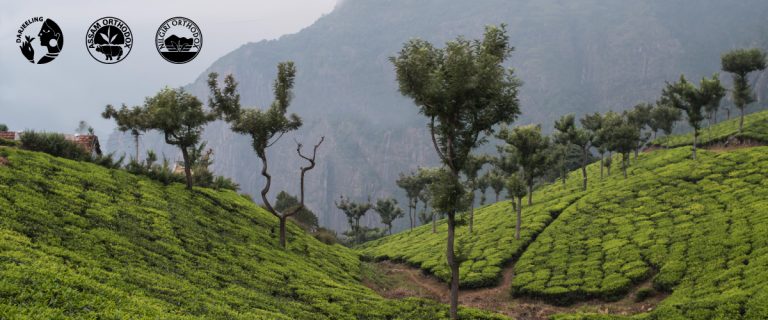GI Tags and Teas
GI or Geographical Indication is a tag that is attached to products to inform buyers about its location of origin. It is a patent of sorts that is globally recognized and conferred on products that have distinctive qualities by virtue of being produced or made in a specific region. The GI tag is a public property owned by the producer of the goods and which cannot be used for mortgages, licensing etc.
What benefits does the GI tag carry?
Uniqueness is not a modern-day concept; when sailors like Christopher Columbus braved uncharted seas to look for spices and exotic goods, they did so because they were looking for something unique which was not be found anywhere else.
The specific geographical origin of tea plays an important role in identifying its qualities and developing its reputation. Think of the parallels one can draw, wine and cheese are some of the products which have GI tags allotted to them. The name ‘champagne’ can now only be used on products grown in the French Champagne region. Greece was recently allotted the feta cheese GI.
In the case of tea, how do you differentiate between an authentic tea that comes to you straight from a reputed tea growing region, and a generic tea that claims to be from the same region? An expert can differentiate between quality but for a consumer, the GI tag proves authenticity and allows producers who own the tag to stop others from selling low quality products.
Indian Teas with GI tag
India produces some of the finest and most sought after varieties of tea in the world. Many tea companies purport to sell specific Indian varieties, but instead sell adulterated or fake tea leaves.
To help curb this, three of the most prominent varieties of Indian tea have been accorded with a GI tag. This holy trinity is made of Darjeeling, Assam and Nilgiri orthodox teas.
Darjeeling tea is grown in the Darjeeling region of West Bengal. It was the first Indian product to receive a GI tag, back in 2004, and is probably one of the most recognizable brands of tea from India. Only 87 tea estates in the region have been accorded the right to use the ‘Darjeeling Tea’ label.
The Nilgiri tea is grown in the hills of the Nilgiri district in Tamil Nadu, in the southern range of the Western Ghats. More than 70% of this flavored, aromatic tea is exported. While both orthodox and CTC (crush, tear, curl) teas are produced here, the Nilgiri orthodox tea is a registered GI. It also has the unique distinction of being the 100th commodity in India to earn the GI recognition.
The Indian state of Assam has a unique place in the history of tea cultivation. Apart from Southern China, it is the only region with native tea plants and is the world’s largest tea growing region.
Assam produces both orthodox and CTC tea teas. Thanks to GI, the widely popular Assam Orthodox Tea has been branded since 2008. Only those teas “that are grown and manufactured out of the basic Camellia Sinensis var. Assamica and other variants in tea estates located in the Brahmaputra or Assam Valley in northeastast India” are allowed the Assam Orthodox tag.

Comments are closed.